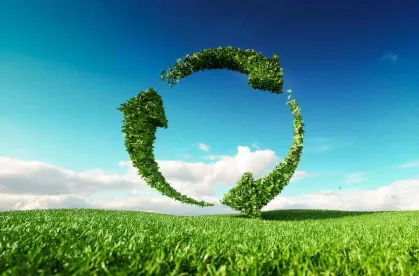New Green Act Could Extend and Create New Credits for Renewable Energy, Energy Storage, Carbon Capture, and Electric Vehicles
On 5 February, the House Ways and Means Subcommittee on Select Revenue Measures announced the reintroduction of the “Growing Renewable Energy Efficiency Now (GREEN)” Act. The bill was previously introduced in June 2020. If passed, the legislation would provide for a host of incentives across the renewable energy, energy storage, carbon capture, and electric vehicle industries.
Some notable provisions include:
-
Reinstatement of a 30 percent investment tax credit (ITC) through 2026, decreasing to 26 percent in 2027, 22 percent in 2028, and 10 percent for subsequent years.
-
Extension of the 60 percent wind production tax credit (PTC) through 2026.
-
Extension of the offshore wind ITC and carbon dioxide sequestration credits for one year and through 2026.
-
Eligibility of several new energy storage technologies and biogas facilities for the ITC.
-
Taxpayers would be able to elect to have 85 percent of the ITC and PTC, and carbon dioxide sequestration credits refundable.
-
Enhanced access by green energy entities to publicly-traded partnerships.
-
Extension of energy efficiency incentives to individuals and an increase of the lifetime limitation.
-
Increase of the electric vehicle credit cap to 600,000 vehicles sold, the credit would then reduce to 50 percent the following quarter, and then be eliminated for that manufacturer.
-
Qualification of sales of used electric vehicles for up to a US$2,500 credit if the vehicle is more than two years old, and the sales price is less than US$25,000.
-
Limitation on the electric vehicle credits to individuals with an adjusted gross income of US$30,000 or less, and US$60,000 for those who file jointly.
-
Adoption of a new credit for electric heavy vehicles and buses of 10 percent of the sale price (up to US$1 million sale price) that will apply through 2026.
Other provisions address environmental justice initiatives, the green workforce, bicycle commuter benefits, alternative and renewable fuels, and an investigation of price of carbon by the U.S. Treasury.
Eight California Community Choice Aggregators from Joint Powers Authority
On 8 February, eight Community Choice Aggregators (CCAs) serving Californian customers announced the formation of California Community Power (CCP), a new Joint Powers Authority (JPA). The new JPA will allow the CCAs to combine their purchasing power to procure new, cost-effective clean energy and reliability resources. Membership includes MCE, Central Coast Community Energy, East Bay Community Energy, Peninsula Clean Energy, Redwood Coast Energy Authority, San José Clean Energy, Silicon Valley Clean Energy, and Sonoma Clean Power. CleanPowerSF is reportedly pursuing membership.
Combined, these CCAs represent 2.6 million customer accounts and 6.6 million people across municipalities spanning from Humboldt County to Santa Barbara County, California. As a comparison, the combined load served by CCP represents about 40 percent of PG&E’s annual electric load. By combining their purchasing power, these CCAs will be better positioned to pursue their climate goals, which are typically more aggressive than the California state mandate to achieve a 100 percent clean energy grid by 2045. Under the new JPA structure, individual CCA members are not obligated to participate in every procurement or joint project. Instead, each CCA will maintain its community-driven, local autonomy to meet the needs of its customers and region.
This is not the first time these eight CCAs have joined forces to advance their clean energy goals. In October 2020, they coordinated to issue a Request for Offer for long duration energy storage capacity to help integrate their renewable portfolios into the grid.
Southeastern US Utilities Request Federal Energy Regulatory Commission Approval for Energy Exchange
On 12 February, the Southeast Energy Exchange Market (SEEM) filed with the Federal Energy Regulatory Commission for approval to establish a new electricity market. SEEM would establish an automated trading platform to enable sales of excess wholesale electricity every 15 minutes to reduce costs and incentivize renewable energy use. SEEM is currently composed of 16 founding member utilities across 11 states, representing more than 160,000MW of power and serving more than 32 million retail customers.
SEEM would serve as an extension of the existing bilateral trading market and facilitate sub-hourly, bilateral trading. In other words, SEEM would enable participants to buy and sell power in reaction to immediate demand, thereby utilizing available unreserved transmission capacity. As a result of the improved efficiency of SEEM, utilities would decrease costs and improve the incorporation of renewably generated electricity.
Drawing upon the efficiencies seen in the CAISO Energy Imbalance Market, SEEM is the latest regional utility cooperative working to increase efficiency of real time energy trading (see Energizer Vol. 83). If approved, the new SEEM platform could be operational in early 2022.
Green Hydrogen Joint Venture in Iveria will Help Meet the European Union's Carbon Goals
On 16 February, Acciona SA and Plug Power Inc. announced a 50-50 joint venture based in Madrid, Spain, to develop and become the lead green hydrogen platform for all of Spain and Portugal. Acciona SA is Spain’s largest supplier of 100 percent renewable energy. Plug Power Inc. is a New York-based company working in hydrogen fuel cell systems and associated fueling, with 40,000 fuel cell systems and 150 fueling stations launched globally, distributing more than 40 tons of hydrogen daily.
The joint venture plan is to build out, operate, and maintain green hydrogen developments, with the ultimate goal to reach a 20 percent market share of the green hydrogen economy in Spain and Portugal by 2030. The initiative is part of a larger strategy taken by the European Union and member states to prioritize their green hydrogen portfolio as a tool to achieve their carbon reduction goals. For example, in July 2020, the European Union announced a plan to install at least 6 GW of renewable hydrogen electrolyzers in the European Union and generate an excess of one million tons of green hydrogen by 2024.






 />i
/>i
